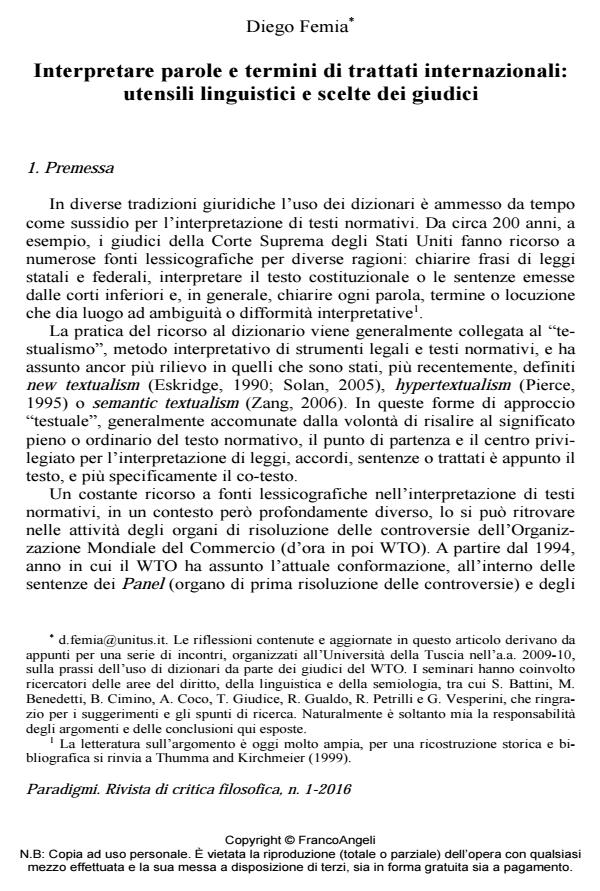Interpretare parole e termini di trattati internazionali: utensili linguistici e scelte dei giudici
Titolo Rivista PARADIGMI
Autori/Curatori Diego Femia
Anno di pubblicazione 2016 Fascicolo 2016/1
Lingua Italiano Numero pagine 15 P. 11-25 Dimensione file 195 KB
DOI 10.3280/PARA2016-001002
Il DOI è il codice a barre della proprietà intellettuale: per saperne di più
clicca qui
Qui sotto puoi vedere in anteprima la prima pagina di questo articolo.
Se questo articolo ti interessa, lo puoi acquistare (e scaricare in formato pdf) seguendo le facili indicazioni per acquistare il download credit. Acquista Download Credits per scaricare questo Articolo in formato PDF

FrancoAngeli è membro della Publishers International Linking Association, Inc (PILA)associazione indipendente e non profit per facilitare (attraverso i servizi tecnologici implementati da CrossRef.org) l’accesso degli studiosi ai contenuti digitali nelle pubblicazioni professionali e scientifiche
In diritto internazionale il tema dell’interpretazione è sempre molto attuale. Questo contributo si propone di descrivere le pratiche interpretative dell’Organiz¬zazione Mondiale del Commercio, con particolare attenzione all’uso da parte dei giudici internazionali di fonti lessicografiche per interpretare parole e termini di trattati multilaterali. Tenendo conto dei diversi livelli di analisi linguistica necessariamente interessati, il contributo presenta una ricognizione storico-statistica del fenomeno e, attraverso la formulazione di una griglia di analisi e la sua applicazione a un primo campione di sentenze, i primi risultati dell’indagine.
Parole chiave:Discorso giuridico, dizionario, interpretazione accordi internazionali, OMC, significato ordinario, vaghezza linguistica.
- La lingua ordinaria nel diritto: aspetti dell'interdisciplinarità Raffaella Petrilli, in PARADIGMI 1/2016 pp.27
DOI: 10.3280/PARA2016-001003
Diego Femia, Interpretare parole e termini di trattati internazionali: utensili linguistici e scelte dei giudici in "PARADIGMI" 1/2016, pp 11-25, DOI: 10.3280/PARA2016-001002